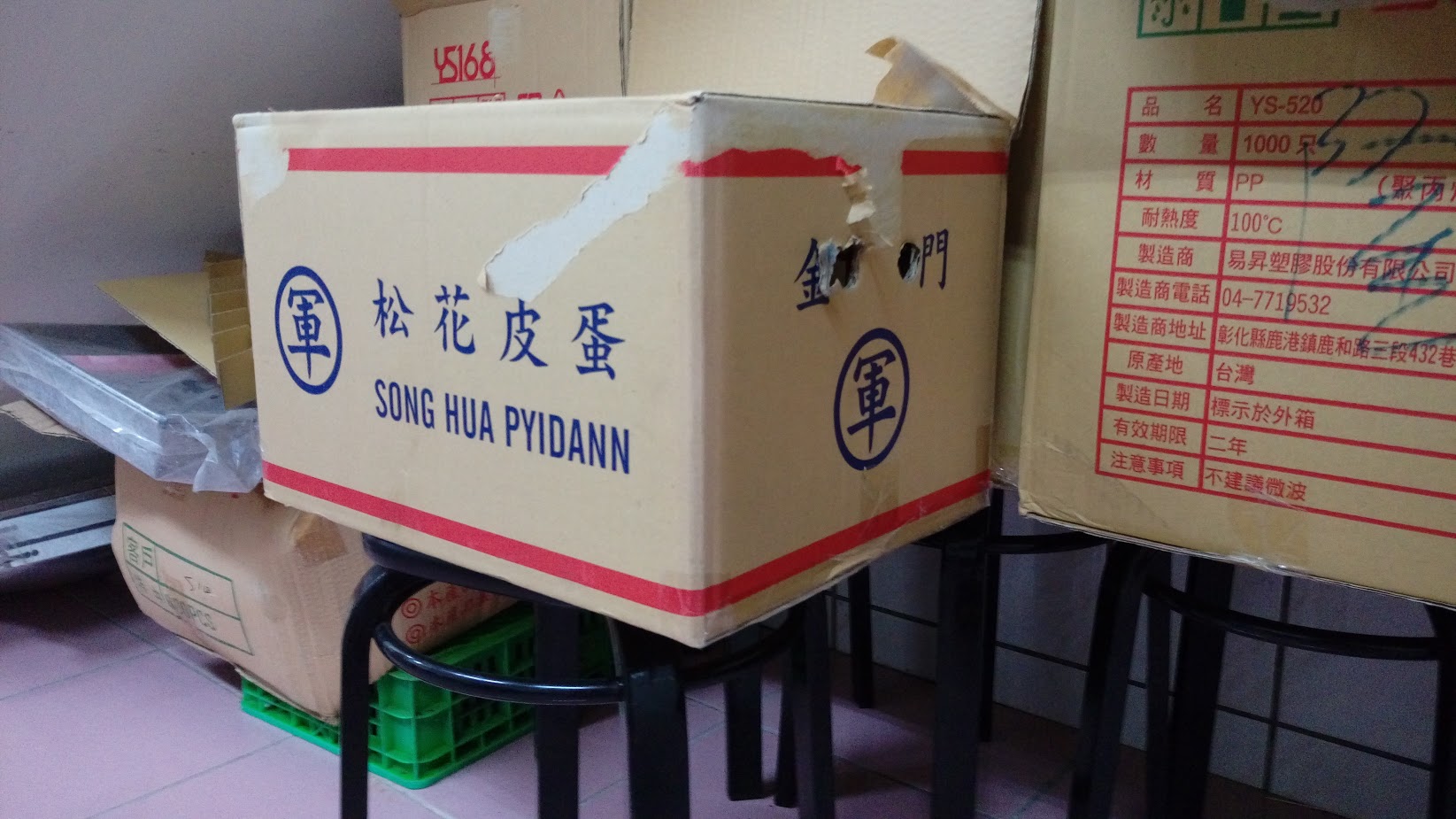Although Gwoyeu Romatzyh was technically the ROC’s official romanization system for most of the twentieth century (through 1986), it’s very seldom seen in Taiwan. The most common place for it to appear is on the side of coach buses. But here’s an example of Guoyeu Romatzyh on a shipping box for thousand-year-old eggs:
SONG HUA PYIDANN
Guoyeu Romatzyh is often most easily identified by the doubled vowel in most (but not all) third-tone syllables. But this example doesn’t have any of those. The y indicates second tone (except when it doesn’t). And the doubled final n is a marker of fourth tone. (Have I ever mentioned that Gwoyeu Romatzyh often reminds me of “The Name Game“?)
In Hanyu Pinyin, songhua pyidann is sōnghuā pídàn.
Another technical point, this photo wasn’t taken in Taiwan proper but rather on Kinmen (金門), which provides an example of a romanization system older than Gwoyeu Romatzyh, older than Wade-Giles even. It’s postal romanization, which I regard as too mixed up to properly be called a system. In Hanyu Pinyin, Kinmen is Jinmen. The island is also known as Quemoy.


Mingwo de Gwoyeu Romatzyh bii Horngchaur de Pinyin hao tay duo .la! Inggai guangfuh Gwoyeu Romatzyh!